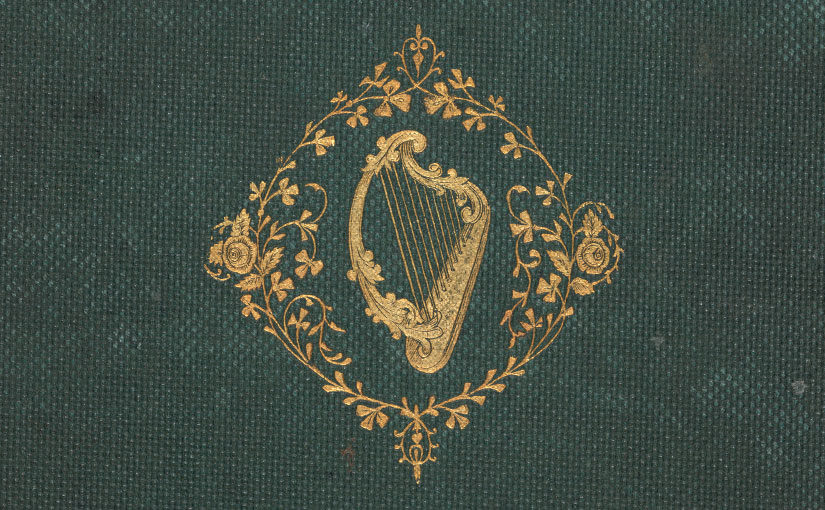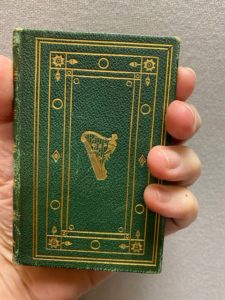by Aedín Ní Bhróithe Clements, Irish Studies Librarian
Featured in our current exhibit, Printing the Nation: A Century of Irish Book Arts, is an elaborately decorated cover of a book that describes and celebrates the new Irish Free State.
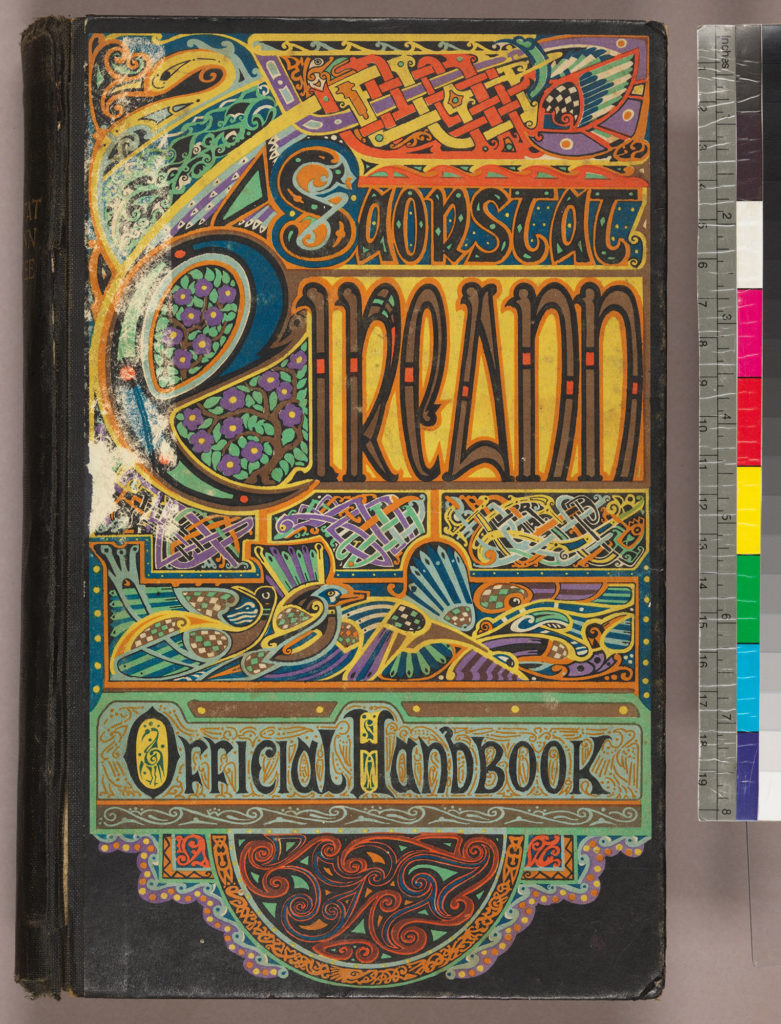
The Treaty of 1922 resulted in the formation of the Irish Free State. This tenth anniversary book, published under the Minister for Industry and Commerce and edited by Bulmer Hobson, is intended to show the world how Ireland has developed in all areas, from science and industry to education and art. The book is profusely illustrated.
The cover design by Art O’Murnaghan (1872-1954), is clearly making reference to the style of early Irish illuminated manuscripts. This decorative style, based on the art of illuminated manuscripts such as the Book of Kells and the Book of Durrow, became very popular during the Celtic Revival of the nineteenth and early twentieth centuries.
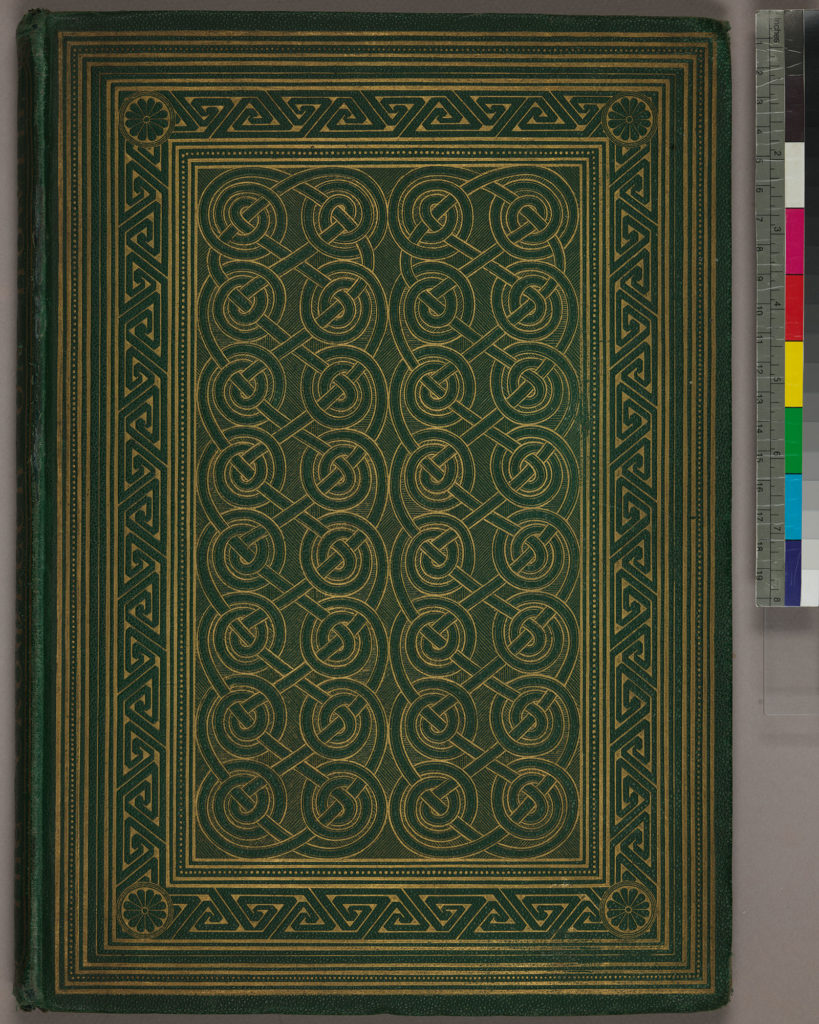
An earlier example of the celebration of early Irish art is found in ‘The Cromlech on Howth’, a book that combines the fascination and research into Irish art and literature with a poem by Samuel Ferguson, decoration by Margaret Stokes, and an essay on Irish script by George Petrie.
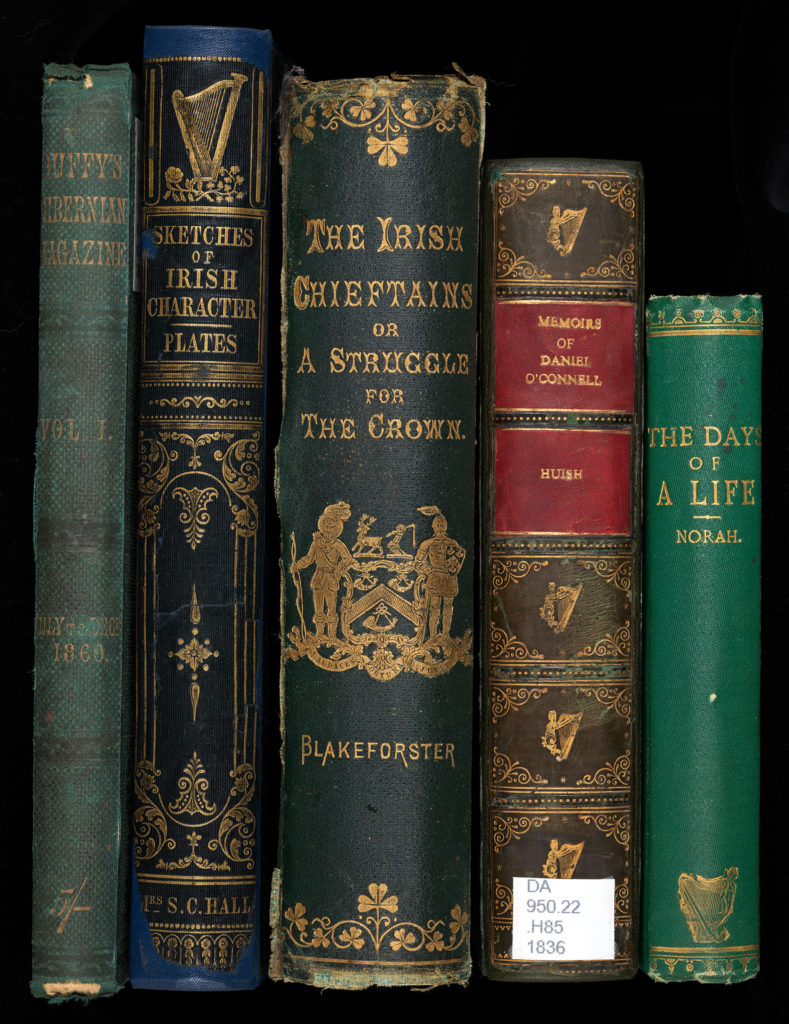
Shamrocks and harps, however, have been used as emblems of Ireland for centuries, and in America in particular, book bindings of the nineteenth and early twentieth centuries proclaim the Irish context with a harp, a decoration of shamrocks, or both. In The Days of a Life, by “Norah” (Margaret Dixon McDougall), is a story of Ireland showing the plight of the laborers and the abuse of the landlord class, from the perspective of a young Canadian visitor. The additional images of a round tower and the ruins of a castle or monastery are also typically suggestive of Ireland’s history.
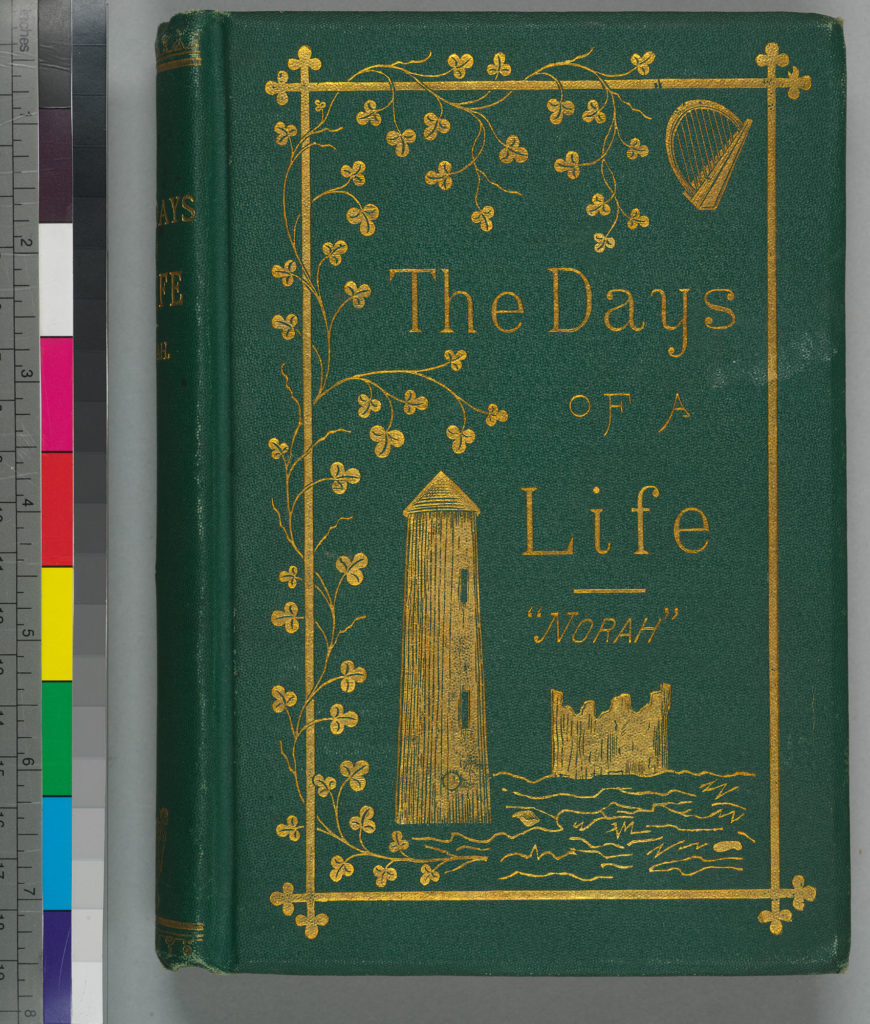
The tiny edition of Thomas Moore’s extraordinarily popular Irish Melodies shown here includes a ‘female harp’ combining the harp, a symbol of Ireland with the female personification of Ireland. Among Moore’s Melodies, ‘The Harp that Once Through Tara’s Hall’ is one of Moore’s many references to the harp.
The harp that once through Tara’s hall
The soul of music shed,
Now hangs as mute on Tara’s walls
As if that soul were fled.
So sleeps the pride of former days,
So glory’s thrill is o’er,
And hearts, that once beat high for praise,
Now feel that pulse no more.
No more to chiefs and ladies bright
The harp of Tara swells:
The chord alone that breaks at night,
Its tale of ruin tells.
Thus freedom now so seldom wakes,
The only throb she gives,
Is when some heart indignant breaks.
To show that still she lives.
A Philadelphia edition of Mrs. S. C. Hall’s stories, Wearing of the Green, or, Sketches of Irish Character, published in 1868, has a winged woman as part of the harp.
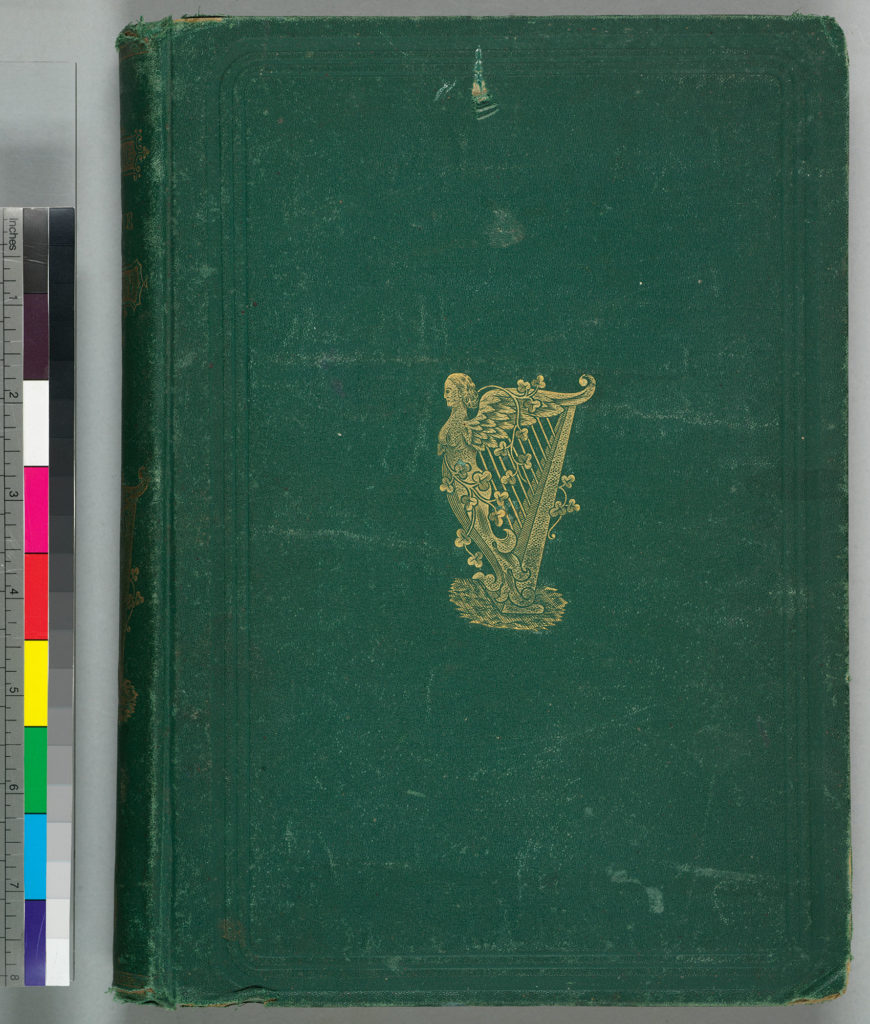
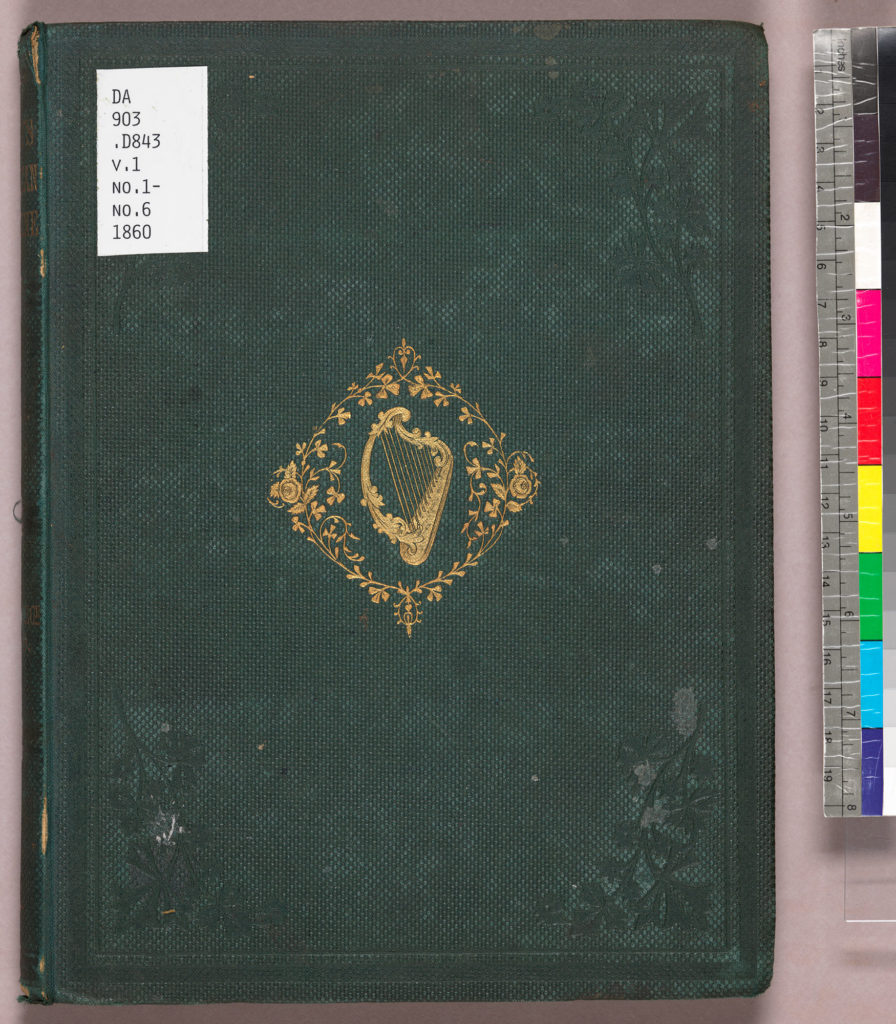
This bound set of issues of Duffys Hibernian Magazine, published in Dublin in 1860, bears the bookplate Mathew Dorey of Dublin.
See more examples of the art and craft of Irish book at our exhibition in the Rare Books and Special Collections: Printing the Nation: A Century of Irish Book Arts
